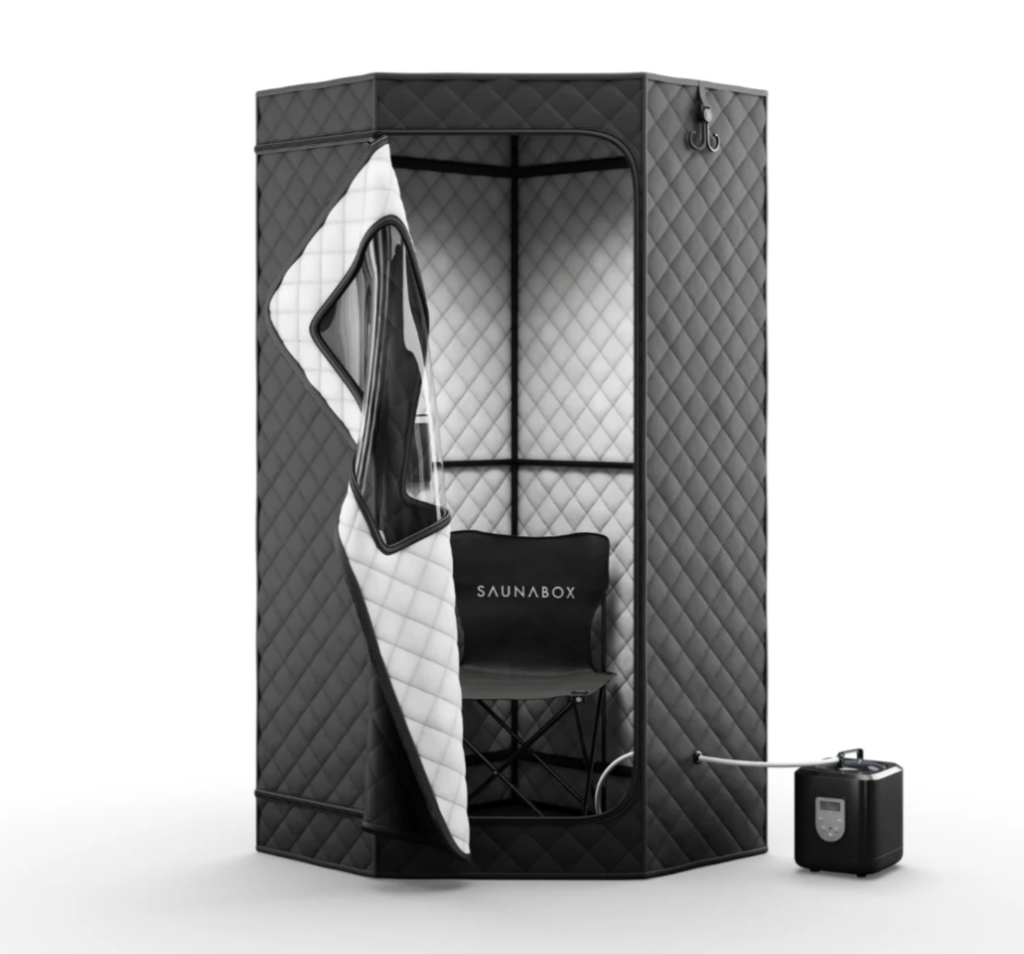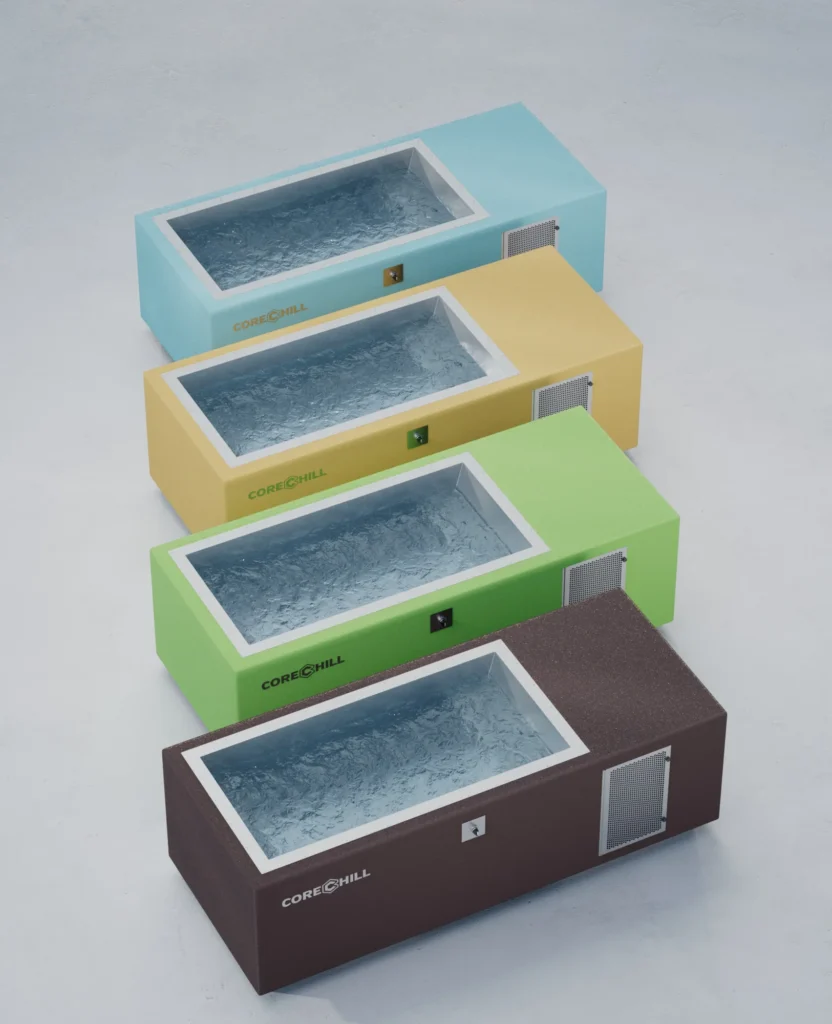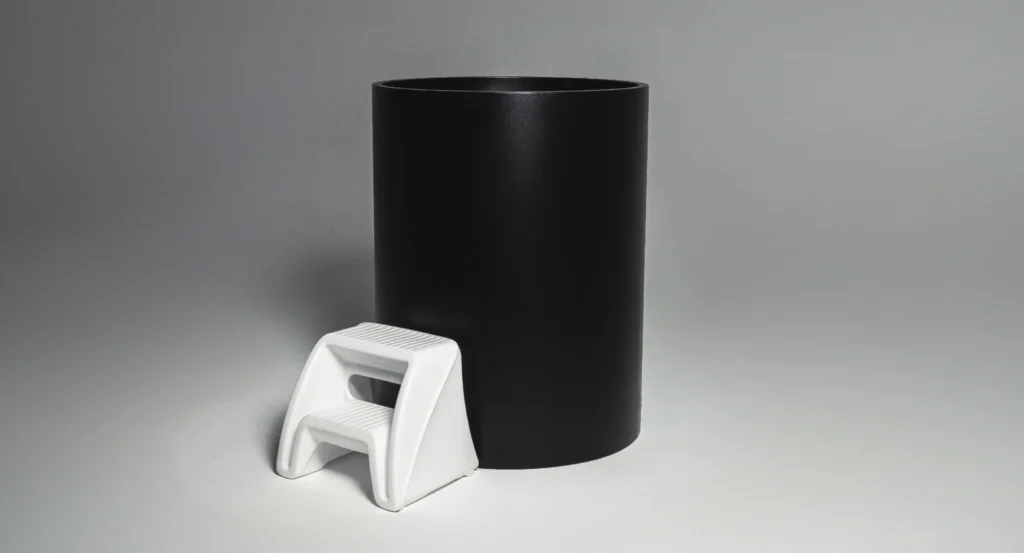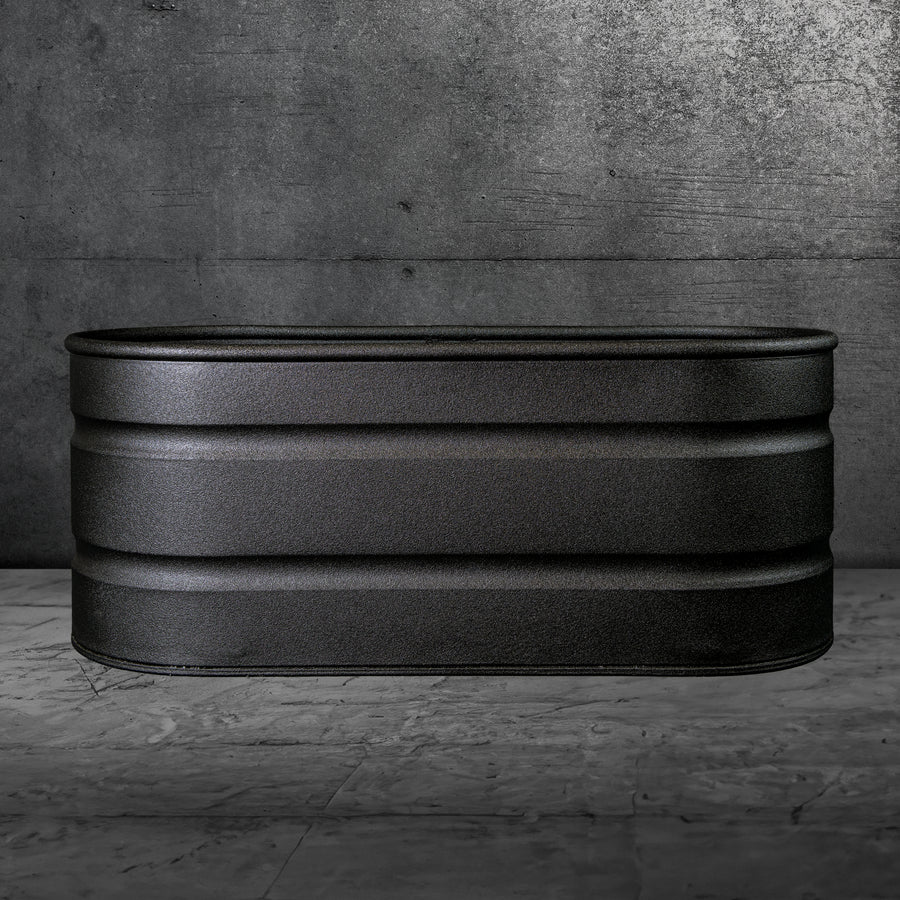Cold water immersion, often referred to as a cold plunge, offers incredible physical and mental benefits, such as reducing inflammation, improving circulation, and boosting mood. However, to maximize these benefits, what you do after your cold plunge is just as important.
This guide covers what to do after cold plunge practices, tips, restrictions, and recommendations for enhancing your wellness routine.
Contents
- 1 Why Post-Cold Plunge Care is Important
- 2 The Science Behind Cold Plunge Recovery
- 3 Warm Up Gradually
- 4 Hydrate to Replenish Lost Fluids
- 5 How Often Should You Do Cold Plunges?
- 6 Perform Gentle Movement
- 7 Nourish Your Body with Healthy Foods
- 8 Who Should Avoid Cold Plunges?
- 9 Signs You’re Overdoing Cold Therapy
- 10 Creating the Ideal Post-Plunge Recovery Space
- 11 Can You Combine Cold Plunge with Hot Tub Therapy?
- 12 Recommended Cold Plunge Brands
- 13 FAQs About Post-Cold Plunge Care
- 14 Conclusion
Why Post-Cold Plunge Care is Important
After immersing yourself in cold water, your body undergoes physiological changes such as blood vessel constriction, increased heart rate, and the release of dopamine and endorphins.
Proper post-plunge care ensures you stabilize your internal temperature, promote recovery, and avoid adverse effects like prolonged muscle stiffness, fatigue, or discomfort.
The Science Behind Cold Plunge Recovery
Cold water immersion works by triggering a physiological response called “vasoconstriction,” where your blood vessels constrict to conserve heat and direct blood flow to vital organs. Once you exit the cold plunge and start warming up, your blood vessels dilate again, which promotes circulation and delivers oxygen and nutrients to your muscles. This process reduces inflammation and helps speed up recovery.
Cold plunges stimulate the release of neurotransmitters like norepinephrine and dopamine, which can elevate mood and improve focus. This neurochemical boost is why many people report feeling energized and mentally sharp after their session.
Warm Up Gradually
One of the most crucial steps after a cold plunge is to warm up your body slowly and safely.
Effective Warming Methods:
- Use a Sauna: A sauna session can help restore your body’s core temperature while promoting relaxation and boosting circulation.
- Consider the SaunaBox for a portable and efficient sauna experience.

>>Check Pricing for SaunaBox Here<<
- Wear Warm Clothing: Dry off immediately and layer up with warm, comfortable clothes. Wool and fleece materials are especially good at retaining heat.
- Sip a Warm Drink: Herbal teas, such as ginger, turmeric, or chamomile, can help raise your internal body temperature and provide anti-inflammatory benefits.
- Pro Tip: Avoid using an extremely hot shower or bath immediately after the cold plunge, as it can cause rapid blood pressure changes. Instead, let your body gradually adjust.
Hydrate to Replenish Lost Fluids
Cold plunges can lead to fluid loss through evaporation and sweat. Rehydrating afterward is essential for maintaining proper circulation and preventing dehydration.
Hydration Tips:
- Drink Electrolyte-Rich Fluids: Choose water with added electrolytes to replenish lost minerals.
- Avoid Sugary Beverages: Opt for natural hydration options like coconut water, herbal infusions, or sugar-free electrolyte drinks.
- Consider Recovery Drinks: Products from brands like Nuun Hydration offer post-plunge hydration supplements with ingredients designed to reduce inflammation and restore balance.
Hack: Add a pinch of Himalayan salt and a squeeze of lemon to your water for a natural electrolyte boost.
How Often Should You Do Cold Plunges?
The frequency of cold plunges depends on your fitness level and recovery needs. For beginners, starting with 2-3 sessions per week is recommended. As your body adapts, you can increase the frequency to daily plunges if desired.
For athletes or individuals using cold plunges for intense recovery, daily sessions lasting 2-5 minutes can provide the best results. However, remember that moderation is key—overexposure can have diminishing returns and may increase muscle stiffness.
Pro Tip: Listen to your body and adjust the frequency based on how you feel post-plunge.
Perform Gentle Movement
Light activity after a cold plunge helps your body transition back to its normal state and prevents stiffness.
Suggested Post-Plunge Movements:
- Stretching: Focus on dynamic stretches, such as leg swings, arm circles, and spinal twists, to maintain flexibility.
- Light Walks: A 5-10 minute walk helps increase circulation and maintain the benefits of the cold plunge.
- Foam Rolling: Target sore muscles with gentle foam rolling to release muscle tension and support recovery.
Tip: Avoid high-intensity workouts immediately after a cold plunge, as your muscles may need time to recalibrate.
Nourish Your Body with Healthy Foods
Cold plunges can activate your metabolism and increase your caloric needs. Refueling with nutrient-dense foods aids recovery and boosts energy levels.
Recommended Post-Plunge Foods:
- Protein-Rich Foods: Eggs, lean meats, protein shakes, or plant-based proteins help repair muscles.
- Healthy Fats: Avocados, nuts, and olive oil support brain function and reduce inflammation.
- Complex Carbohydrates: Whole grains, fruits, and vegetables replenish glycogen stores and provide sustained energy.
Hack: Prepare a post-plunge smoothie with banana, almond butter, protein powder, and a pinch of cinnamon to combine healthy fats, protein, and carbs.
Who Should Avoid Cold Plunges?
Although cold plunges offer numerous benefits, they may not be suitable for everyone. Individuals with the following conditions should consult a healthcare provider before incorporating cold plunges:
- Heart Conditions: Sudden temperature changes can strain the cardiovascular system.
- High or Low Blood Pressure: Cold water immersion can cause rapid blood pressure fluctuations.
- Circulatory Disorders: People with conditions affecting blood circulation may experience adverse effects.
- Cold Sensitivity Disorders: Individuals with Raynaud’s disease or similar conditions may have an exaggerated response to cold.
Pregnant individuals and those recovering from recent surgeries should also seek medical advice before starting a cold plunge routine.
Signs You’re Overdoing Cold Therapy
While cold plunges are beneficial, overdoing it can lead to negative effects. Pay attention to the following signs that you may be exceeding your body’s limits:
- Prolonged Shivering: If shivering continues long after the plunge, it may indicate that your body hasn’t stabilized.
- Numbness or Tingling: Persistent numbness in your extremities is a sign that your exposure may have been too long.
- Fatigue or Dizziness: Feeling lightheaded or unusually fatigued may indicate overstimulation of the nervous system.
Tip: If you experience these symptoms, prioritize warming up, resting, and hydrating immediately.
Creating the Ideal Post-Plunge Recovery Space
Your environment plays a significant role in maximizing your post-cold plunge relaxation. Creating a calm, inviting space can help you unwind and reset.
Elements of an Ideal Recovery Space:
- Ambient Lighting: Use soft, warm lights or candles to create a relaxing atmosphere.
- Comfortable Seating: Add cozy chairs, blankets, and pillows to encourage relaxation.
- Aromatherapy: Diffuse essential oils like eucalyptus or lavender to enhance your sensory experience.
- Soundscapes: Play calming music, nature sounds, or guided meditations to support mental recovery.
Pro Tip: Consider setting up a designated recovery corner with a massage gun, foam roller, and your favorite warm beverage.
Can You Combine Cold Plunge with Hot Tub Therapy?
Yes, alternating between a cold plunge and hot tub is a form of contrast therapy that can amplify recovery benefits.
Benefits of Contrast Therapy:
- Enhanced Circulation: Heat dilates blood vessels, while cold constricts them, creating a “pump” effect that improves blood flow.
- Reduced Inflammation: Cold plunges reduce inflammation, while heat relaxes tense muscles.
- Mental Relaxation: The contrast between hot and cold provides a soothing sensory experience.
For an even more immersive experience, consider a Cold Plunge Sauna Combo, which combines cold water immersion with sauna therapy. Brands like SaunaBox offer portable options that make contrast therapy accessible from home.
Recommended Cold Plunge Brands
If you’re considering upgrading your cold plunge setup, here are some of the top brands known for their reliability and design:
1. BlueCube Baths
BlueCube Baths specializes in luxury cold plunge tubs designed for personal and commercial use, focusing on cold water therapy for recovery and wellness.
Key Features:
- Luxury Designs: BlueCube offers aesthetically pleasing tubs, often featuring high-quality timber finishes.
- Eco-Friendly Filtration: Their tubs utilize a 20-micron filter and an ozone sanitation system, ensuring clean water with minimal chemical use.
- User-Friendly Operation: The tubs are easy to set up and maintain, requiring only a power source and water to start. They also have a bottom drain valve for quick cleaning.
Most Known Product: The CoreChill³ Cold Plunge is known for its robust construction and advanced features.

Distinctive Features of CoreChill³:
- Temperature Range: Operates between 37°F to 70°F, allowing users to customize their cold therapy experience.
- Commercial Grade: Built with a 14-gauge stainless steel tub and a powerful 1.0 HP motor, making it suitable for both home and professional settings.
- Warranty: Comes with a 5-year warranty, underscoring its durability and reliability.
>>Check Pricing for BlueCube Baths Here<<
2. The Cold Life
The Cold Life produces American-made cold plunge tubs designed for versatile indoor and outdoor use, emphasizing advanced insulation technology.
Key Features:
- Indoor/Outdoor Use: Their tubs are engineered for flexibility in placement.
- Advanced Insulation: Designed to maintain low temperatures efficiently, minimizing energy consumption.
- WiFi Temperature Control: Allows users to adjust the temperature remotely for convenience.
Most Known Product: The Cold Life Ultimate Plunge Tub is recognized for its compact design and effective filtration system.

Distinctive Features of Cold Life Plunge Tub:
- UV Light Disinfection: Enhances hygiene by using UV light to disinfect the water.
- Step Stool Availability: Comes with an optional step stool for easy access.
>>Check Pricing for The Cold Life Here<<
3. Polar Monkeys
Polar Monkeys focuses on creating durable cold plunge tubs that prioritize minimalistic design and effective cold therapy solutions.
Key Features:
- Durable Construction: Built to withstand rigorous use while maintaining aesthetic simplicity.
- Powerful Cooling Systems: Ensures consistent cold temperatures for effective therapy sessions.
Most Known Product: The Polar Monkeys Portal X is known for its straightforward design and reliable cooling capabilities.

Distinctive Features of Polar Monkeys Cold Plunge Tub:
- Minimalistic Design: Offers a sleek appearance that fits well in various environments without compromising on functionality.
- Efficient Cooling Technology: Provides rapid cooling capabilities to ensure optimal cold therapy experiences.
>>Check Pricing for Polar Monkeys Here<<
FAQs About Post-Cold Plunge Care
How long should I wait to exercise after a cold plunge?
It is recommended to wait 30-60 minutes to allow your body to stabilize before engaging in intense physical activity.
What should I eat after a cold plunge?
Consume a nutrient-dense meal that includes protein, healthy fats, and complex carbohydrates to support recovery.
Is it okay to warm up immediately after a cold plunge?
Yes, but it is best to warm up gradually to avoid shocking your system. Avoid hot showers right away; opt for dry heat from a sauna or warm clothing.
Can I meditate after a cold plunge?
Absolutely. Meditation can help enhance the mental clarity and sense of calm achieved from the cold plunge.
How often should I clean my cold plunge tub?
Clean your cold plunge tub weekly to maintain water hygiene and prevent bacteria buildup.
Are cold plunges safe every day?
Yes, daily cold plunges can be safe for most people, but beginners should start with 2-3 sessions per week and gradually increase frequency.
Conclusion
Knowing what to do after a cold plunge is essential for maximizing its benefits and avoiding potential drawbacks. Proper post-plunge care—such as warming up, hydrating, eating nutritious foods, and practicing mindfulness—can elevate your recovery experience and enhance your physical and mental well-being.
Remember, balance and consistency are key. Your body needs time to adapt, so listen to your signals and adjust your routine accordingly. Incorporating other wellness practices, such as contrast therapy with saunas or relaxing recovery spaces, can further improve your overall results.
Whether you’re an athlete seeking optimal recovery or someone aiming to boost energy and resilience, tailoring your post-cold plunge routine can make all the difference. Start incorporating these strategies today and make every cold plunge session a stepping stone toward a stronger, healthier you.
This website may contain affiliate links. As an affiliate, we may earn a commission from qualifying purchases at no additional cost to you.
